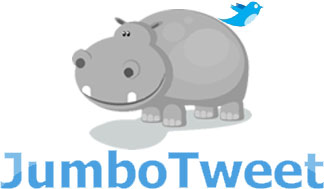
10 biggest mergers and acquisitions of 2015
10 biggest mergers and acquisitions of 20152015 has been a record year for mergers and acquisitions as M&A activity hit record levels in November, fuelled by consolidation in various industries such as semiconductors and healthcare, according to data provider Dealogic.
M&A volume in 2015 was pushed to $4.304 trillion, beating its previous record of $4.296 trillion in 2007. M&A volume was pushed past the 2007 record by a series of 112 smaller deals on Wednesday with an aggregate value of $8.5 billion. Dealogic expects that if M&A maintains its current pace, total M&A volume for 2015 will cross $4.7 trillion.
What drove M&A activity in 2015?
Several factors drove mergers to record levels in 2015. Many companies may have pursued growth inorganically to improve their efficiency and keep up with rivals in a challenging economic environment. The merger movement was helped by low cost of debt and increasing boardroom confidence.
The year also witnessed nine deals of more than $50 billion and a whopping 58 deals of more than $10 billion, both of which are records. 2015 also saw the largest healthcare deal and second largest deal overall with Pfizer’s Inc. (PFE) Allergan PLC (AGN) merger.
Apart from that, the beer and technology sectors also saw record deals as both industries sought to further consolidate. However, analysts suggest that these industries may not witness growth in the number of deals as most of the industry has already consolidated.
U.S. Contribution
The U.S. contributed around 50% to global deal volume in 2015, having already hit record levels of more than $2 trillion in September. The biggest contributors to the growth in U.S. M&A activity were in the health care and technology industries. The large number of healthcare deals in U.S., including the Pfizer-Allergan merger, were largely driven to avoid high tax rates, which is known as corporate inversion. Lawmakers have already made a move to suppress such transactions.
The clear winner from these deals were the investment bankers, who earned an aggregate fees of $21 billion by advising on these deals, according to Dealogic. However, this number be even higher as a number of these deals are yet to close and investment banks receive their fees after the deals close. Dealogic also pointed out that Goldman Sachs Group Inc. (GS), JP Morgan Chase & Co. (JPM) and Morgan Stanley (MS) are the top three investment banks for 2015.
Top 10 transactions
10. EBay shareholders and Paypal: $47 billion
In June, e-commerce giant eBay announced it would spin-off online payment provider Paypal, which it had acquired in 2002. As each eBay shareholder received one Paypal stock for each eBay stock, Thomson Reuters have listed the spin-off as the 10th biggest M&A deal of the year.
9. Anthem and Cigna: $48 billion
The proposed merger between Anthem Incand Cigna came under a lot of scrutiny after it was announced late in July. The deal would create the largest health insurer in the U.S., with around 53 million customers and there were concerns from the American Medical Association about reduced competition.
8. Heinz and Kraft Foods: $55 billion
Heinz and Kraft completed their merger early in July. The newly created Kraft Heinz Company became the third-largest food company in the U.S. and the fifth-largest in the world by annual sales.
7. Energy Transfer Equity and Williams: $56 billion
Energy Transfer Equity spent a year pursuing energy company Williams. An initial offer of $48 billion in June was rejected, but a deal was struck by late September.
The merger will create the world's largest energy infrastructure group, although the Federal Trade Commission must first review the deal.
6. Dell and EMC: $66 billion
Dell signed an agreement to acquire data storage company EMC in October. The deal was described as the second-biggest technology merger ever by Fortune, behind the $106 billion tie-up between AOl and Time Warner in 2000.
5. Dow Chemical and DuPont: $68 billion
The science and agriculture companies announced a "merger of equals" in December, aimed at producing a giant with a market capitalization of $130 billion and cost-synergy savings of $3 billion.
However, within two years of the completed merger, the newly formed DowDuPont intends to break up into three companies focused on agriculture, material science and technology respectively, according to the press release from DuPont.
4. Charter and Time Warner Cable: $78 billion
Late in May, U.S. broadband provider Charter Communications announced plans to merge with Time Warner Cable.
The deal, valued at $79 billion, vastly increased Charter's customer base by expanding its U.S. footprint by 84,000 square miles.
3. Shell and BG Group: $81 billion
Royal Dutch Shell announced plans to acquire British energy supplier BG in April. The rationale for the merger was to diversify Shell's operations by improving its liquefied gas and deep water exploration capabilities.
2. AB InBev and SABMiller: $120 billion
The Belgian brewer Anheuser-Busch InBev reached an agreement to buy U.K. rival SABMiller in mid-November.
Combining the world's two biggest brewers will form a company that makes almost a third of the world's beer supply.
1. Pfizer and Allergan: $191 billion
The American pharmaceutical giant Pfizer and Irish counterpart Allergan announced a plan to merge late in November. The planned merger would be the second-largest M&A deal on record behind Vodafone AirTouch's $172.0 billion acquisition of Mannesman in 1999, according to Dealogic.The terms of the deal will allow Pfizer to domicile in Ireland, where corporation tax is just 12.5 percent, significantly less than the 40 percent rate charged in the U.S.
Investopedia
CNBC
